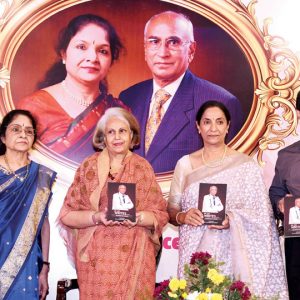Urbanites in their relaxed mood without being stressed for time are given to debate in their drawing rooms over a cuppa comparing quality of life in our times with that in days past focussing on various things that contributed to their happiness. Generally, they are unanimous about its steady decline in all spheres of life, baring a few exceptions. Music, literature, cinema, food delicacies, education, functioning of government employees, tools including razor for shaving and a host of things in common use are specially chosen for their judgement on quality. Historically, an American by name Walter Andrew Shewhart (1891-1967), with a good background of physics and mathematics, being an engineer and statistician was assigned by the top brass in Bell Telephone Company the work of improving the voice clarity of the carbon transmitters of the company’s telephone handsets in the years following the end of World War I. Known as the Father of Statistical Quality Control, also as the Grandfather of Total Quality Management, invented control chart and authored the classic Economic Quality Control of a Manufactured Product in 1931. He was mentor of Dr. William Edwards Deming (1900-1993), a pioneer of statistical sampling methods and theories. Founder of the field of statistical sequential analysis Abraham Wald (1902-1950), a Hungarian Mathematician showed that a sequential sampling procedure, where the sample size is not fixed terminates with certainty. Quality, as perceived by the discussants in their drawing rooms, opens up an ocean of factors that should concern us all.
Statistical Science has played a stellar role in the progress of modern industry manufacturing consumer products in a wide range ensuring impeccable quality, the foundation for which science was laid by Sir Ronald Aylmer Fisher (1890-1962), a British statistician and geneticist considered as a genius. His cohorts in the field have been India’s P.C. Mahalanobis (1893-1972) and C.R. Rao (1920- ). India’s economic health would have been robust if their pioneering work had been applied effectively.
Recognising the decline in quality of life in general and output from the work of people at large in particular covering different fields as well as expressing the ongoing change from various platforms sourced to knowledgeable circles make a sad reading. Even the basic life-supporting resources such as water, food crops, air, building materials, medicines and so on, not to forget civic services needed for clean environment of living spaces are bugged by quality far below norms prescribed by various quality monitoring agencies both in India and under the United Nations umbrella. Public buildings constructed by the workforce of the government, roads laid by contractors known for using sub-standard materials and so on are notorious for their deplorable quality, often claiming precious lives and causing grievous injuries to citizens.
Monuments and sculptures created by the land’s past generations that have endured for centuries are testimony to the importance they bestowed on quality of their creations. That rich legacy seems to have vanished into thin air in our times, thanks to the quality of functionaries in successive governments of the land, particularly the law-makers. The idiom Yathaa Raja, Thathaa Praja says it all.








Recent Comments